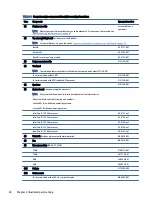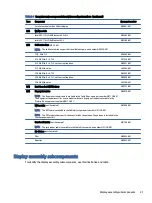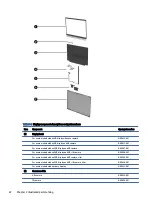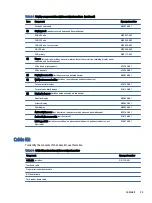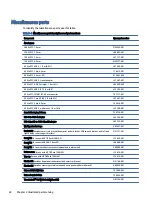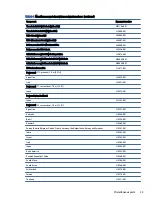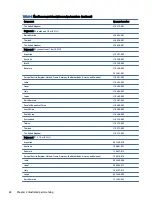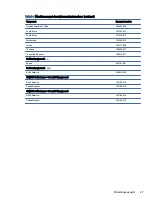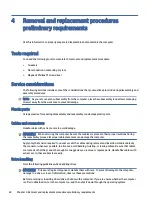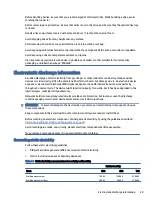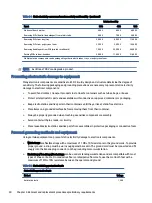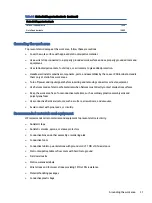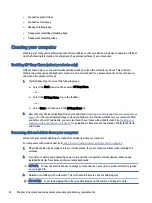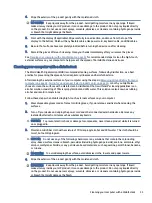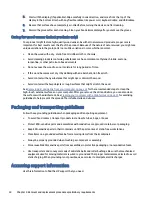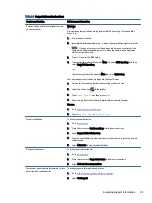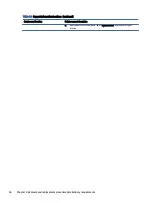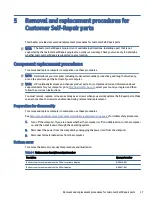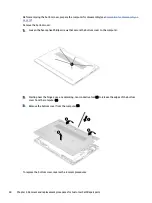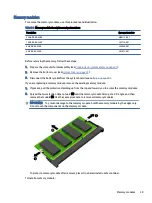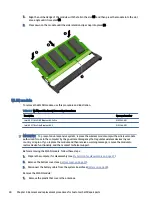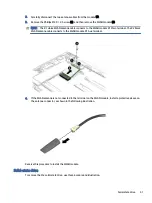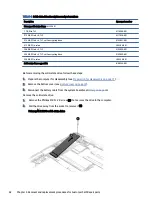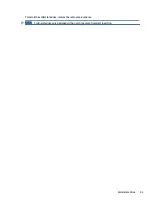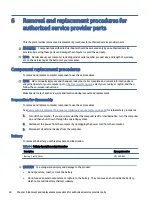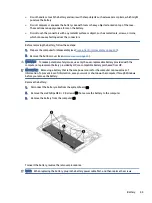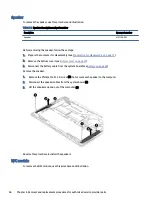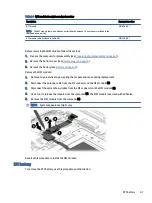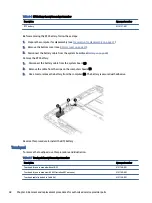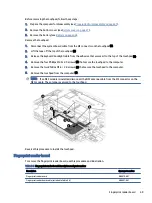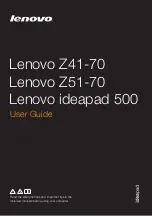
5.
Start with the display (if applicable). Wipe carefully in one direction, and move from the top of the
display to the bottom. Finish with any flexible cables, like power cord, keyboard cable, and USB cables.
6.
Be sure that surfaces have completely air-dried before turning the device on after cleaning.
7.
Discard the gloves after each cleaning. Clean your hands immediately after you remove the gloves.
Caring for wood veneer (select products only)
Your product might feature high-quality wood veneer. As with all natural wood products, proper care is
important for best results over the life of the product. Because of the nature of natural wood, you might see
unique variations in the grain pattern or subtle variations in color, which are normal.
●
Clean the wood with a dry, static-free microfiber cloth or chamois.
●
Avoid cleaning products containing substances such as ammonia, methylene chloride, acetone,
turpentine, or other petroleum-based solvents.
●
Do not expose the wood to sun or moisture for long periods of time.
●
If the wood becomes wet, dry it by dabbing with an absorbent, lint-free cloth.
●
Avoid contact with any substance that might dye or discolor the wood.
●
Avoid contact with sharp objects or rough surfaces that might scratch the wood.
Removing dirt and debris from your computer on page 32
for the recommended steps to clean the
high-touch, external surfaces on your computer. After you remove the dirt and debris, you can also clean
the surfaces with a disinfectant. See
Cleaning your computer with a disinfectant on page 33
for sanitizing
guidelines to help prevent the spread of harmful bacteria and viruses.
Packaging and transporting guidelines
Follow these grounding guidelines when packaging and transporting equipment.
●
To avoid hand contact, transport products in static-safe tubes, bags, or boxes.
●
Protect ESD-sensitive parts and assemblies with conductive or approved containers or packaging.
●
Keep ESD-sensitive parts in their containers until the parts arrive at static-free workstations.
●
Place items on a grounded surface before removing items from their containers.
●
Always be properly grounded when touching a component or assembly.
●
Store reusable ESD-sensitive parts from assemblies in protective packaging or nonconductive foam.
●
Use transporters and conveyors made of antistatic belts and roller bushings. Be sure that mechanized
equipment used for moving materials is wired to ground and that proper materials are selected to avoid
static charging. When grounding is not possible, use an ionizer to dissipate electric charges.
Accessing support information
Use this information to find the HP support that you need.
34
Chapter 4 Removal and replacement procedures preliminary requirements
Содержание EliteBook 630
Страница 8: ...13 Recycling 92 Index 93 viii ...

